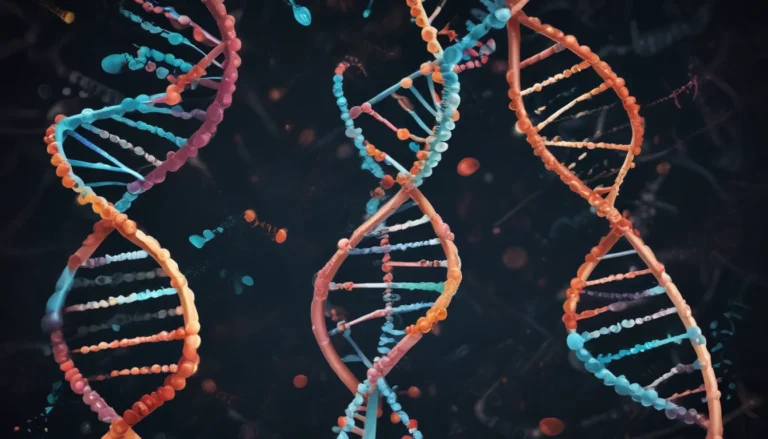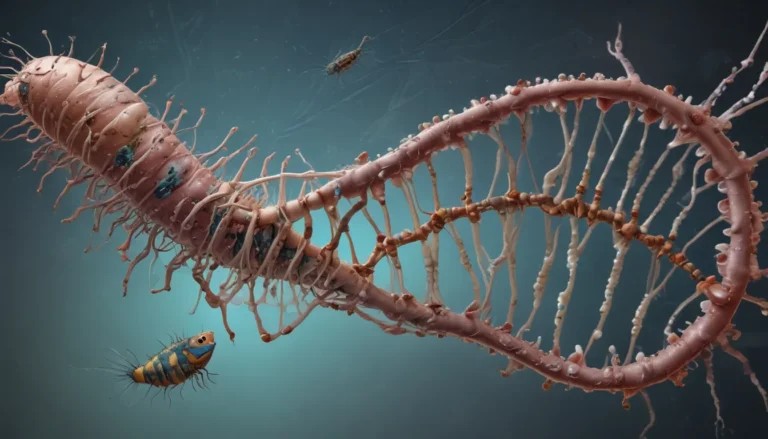A Note About Images: The images used in our articles are for illustration purposes only and may not exactly match the content. They are meant to engage readers, but the text should be relied upon for accurate information.
Mendelian inheritance, also known as classical genetics, is a fundamental concept in biology that delves into the intricate mechanisms by which traits are passed down from one generation to the next. This concept, first unveiled by the pioneering work of Gregor Mendel in the 19th century, forms the cornerstone of our understanding of genetics and heredity.
Delving into the Basics of Mendelian Inheritance
Mendelian inheritance follows specific patterns that govern how traits are inherited in predictable ways. By unraveling the secrets of dominant and recessive alleles, scientists can decipher how genes control various characteristics, from physical attributes to diseases and behaviors.
Unveiling the Laws of Mendelian Inheritance
- Law of Segregation: During gamete formation, alleles for a gene separate, ensuring that each offspring has an equal chance of inheriting specific traits.
- Law of Independent Assortment: Genes are inherited independently of one another, assuming they are located on different chromosomes, allowing for a diverse array of traits to be inherited.
Understanding Alleles and Genotypes
Genes, encoded segments of DNA, control traits through the presence of alleles, which come in two forms. Homozygous genotypes have identical alleles, while heterozygous genotypes possess different alleles for a gene.
Predicting Traits with Punnett Squares
Punnett squares offer a visual representation of the probability of offspring inheriting specific traits based on parental genotypes. This tool aids in understanding how genes are passed down from one generation to the next.
Differentiating Phenotype and Genotype
Phenotype refers to observable traits exhibited by an organism, while genotype represents the genetic makeup underlying these traits. By understanding the interplay between phenotype and genotype, scientists can unveil the mechanisms of inheritance.
Applications and Implications of Mendelian Inheritance
Mendelian inheritance extends beyond theoretical principles and finds practical applications in various fields.
Unveiling Inherited Diseases
The study of Mendelian genetics has been instrumental in diagnosing and understanding inherited diseases caused by genetic mutations. By unraveling the genetic basis of these illnesses, researchers can develop innovative solutions to combat genetic disorders.
Implications in Selective Breeding
Selective breeding, an age-old practice, harnesses the principles of Mendelian inheritance to accentuate desired traits in plants and animals. By understanding how traits are inherited, breeders can create new varieties with specific characteristics.
Linking Mendelian Inheritance to Modern Genetics
Gregor Mendel’s groundbreaking work with pea plants laid the foundation for modern genetics, eventually leading to the discovery of DNA’s role in inheritance. The principles of Mendelian inheritance continue to shape our understanding of genetics and heredity.
Delving Deeper into Mendelian Inheritance
Beyond the basic principles of Mendelian inheritance lie fascinating complexities that enrich our understanding of genetics.
Unraveling Pleiotropy
Pleiotropy showcases how a single gene can influence multiple traits, shedding light on the intricate interplay between genetics and phenotype.
Exploring Incomplete Dominance and Codominance
In situations of incomplete dominance, neither allele is fully dominant, resulting in a blend of traits in heterozygous individuals. Codominance, on the other hand, allows both alleles to be expressed fully, leading to a unique blend of traits in the phenotype.
Representing Mendelian Inheritance
Punnett squares and pedigree charts serve as valuable tools in representing Mendelian inheritance. While Punnett squares predict genotypes and phenotypes, pedigree charts track the inheritance of traits within families.
Conclusion: Unraveling the Wonders of Genetics
Mendelian inheritance stands as a pillar in our understanding of genetics and heredity, offering valuable insights into the inheritance of traits. By exploring the intricate patterns and principles of inheritance, we gain a deeper appreciation for the mechanisms that govern genetic traits across generations.
FAQs
What is Mendelian inheritance?
Mendelian inheritance encompasses the set of principles and patterns discovered by Gregor Mendel that govern how traits are passed on from parents to offspring through genetic transmission.
What are alleles?
Alleles are alternative forms of a gene that occupy the same position on a chromosome, with individuals inheriting two alleles for each gene from their parents.
Can Mendelian inheritance explain all traits?
While Mendelian inheritance sheds light on many traits, the complexities of genetics extend beyond these basic principles, with some traits influenced by multiple genes, environmental factors, and epigenetic modifications.
How has Mendelian inheritance impacted scientific research?
Mendelian inheritance has significantly influenced scientific research by providing a framework for studying genetics, enabling the understanding of trait inheritance, genetic disorders, breeding strategies, and gene therapy approaches.
Delve into the captivating world of genetics and unravel the mysteries of inheritance, guided by the timeless principles of Mendelian inheritance. As you embark on this journey, you will witness the seamless transmission of traits through generations and gain a deeper appreciation for the remarkable mechanisms that govern genetic inheritance.






